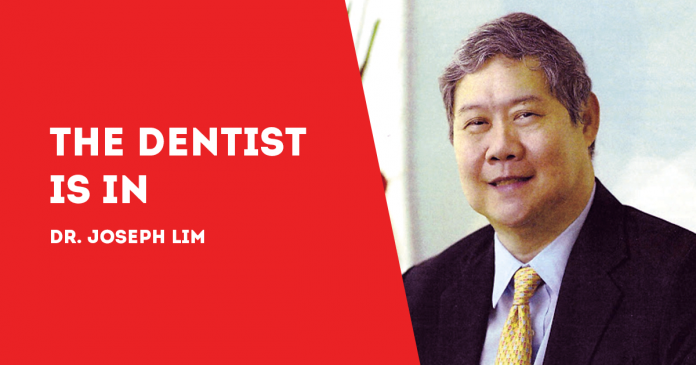
(By Dr. Joseph D. Lim and Dr. Kenneth Lester Lim, BS-MMG, DDM, MSc-OI)
SUGAR IS the main culprit behind tooth decay – or dental caries.
The condition develops after bacteria inside the mouth change sugars to produce acid that demineralizes the hard tissues of the teeth (enamel and dentine).
In many countries, sugars-sweetened beverages, including fruit-based and milk-based sweetened drinks and 100 percent fruit juices, are a primary source of free sugars, as well as confectionery, cakes, biscuits, sweetened cereals, sweet desserts, sucrose, honey, syrups and preserves. Free sugars are any sugars added to food or drink, or the ones in honey, syrup and fruit juice.
Limiting free sugars intake to less than 10 percent of total energy intake – and ideally even further, to less than 5 percent – minimizes the risk of dental caries throughout the life course, according to the World Health Organization (WHO).
Severe dental caries affects general health and often causes pain and infection, which may result in tooth extraction. It is a frequent cause of absenteeism at school or work. An association between dental caries and undernutrition in children has been reported in some low- and middle-income countries; however, whether this is cause or effect, or both, remains to be determined.
Dental caries is a major public health problem globally and is the most widespread noncommunicable disease. It is also the most prevalent condition included in the 2015 Global Burden of Disease Study, ranking first for decay of permanent teeth (2.3 billion people) and 12th for deciduous teeth (560 million children).
Dental caries can be prevented by avoiding dietary free sugars, or sugars that are either added to foods or naturally present in honey, syrups, and unsweetened fruit juices.
When prevention is ignored, teeth affected by caries are often extracted (pulled out) when they cause pain or discomfort.
Severe dental caries can impair quality of life, including difficulties in eating and sleeping, and in its advanced stages (abscesses), it may result in pain and chronic systemic infection or adverse growth patterns. Tooth decay is a frequent cause of absence from school or work.
Everyone is at risk of dental caries, but children and adolescents are most at risk, according to the WHO.
“Almost half of the world’s population is affected by dental caries, making it the most prevalent of all health conditions,” the United Nations health agency warns. “High levels of dental caries occur in middle-income countries, where sugars consumption is high.”
The majority of dental caries occurs in adults because the disease is cumulative. There is a clear dose-response relationship between sugars consumption and dental caries. The disease is also associated with socioeconomic status, with high prevalence rates among the poor and disadvantaged population groups.
Dental caries develops over time; loss of tooth substance (enamel and dentine) is caused by acid production resulting from bacterial metabolism of sugars. Early stages are often without symptoms, but advanced stages of dental caries may lead to pain, infections and abscesses, or even sepsis.
It has been estimated that, globally in 2010, US$ 298 billion was spent on direct costs associated with dental caries. In addition, indirect costs came to US$ 144 billion, with the total financial cost reaching US$ 442 billion in 2010.
***
Dr. Joseph D. Lim, Ed. D., is the former Associate Dean of the College of Dentistry, University of the East; former Dean, College of Dentistry, National University; Past President and Honorary Fellow of the Asian Oral Implant Academy; Honorary Fellow of the Japan College of Oral Implantologists; Honorary Life Member of the Thai Association of Dental Implantology; and Founding Chairman of the Philippine College of Oral Implantologists. For questions on dental health, e-mail jdlim2008@gmail.com or text 0917-8591515.
***
Dr. Kenneth Lester Lim, BS-MMG, DDM, MSc-OI, graduated Doctor of Dental Medicine, University of the Philippines, College of Dentistry, Manila, 2011; Bachelor of Science in Marketing Management, De la Salle University, Manila, 2002; and Master of Science (MSc.) in Oral Implantology, Goethe University, Frankfurt, Germany, 2019. He is an Associate Professor; Fellow, International Congress of Oral Implantologists; and Fellow, Philippine College of Oral Implantologists. For questions on dental health, e-mail limdentalcenter@gmail.com/PN







